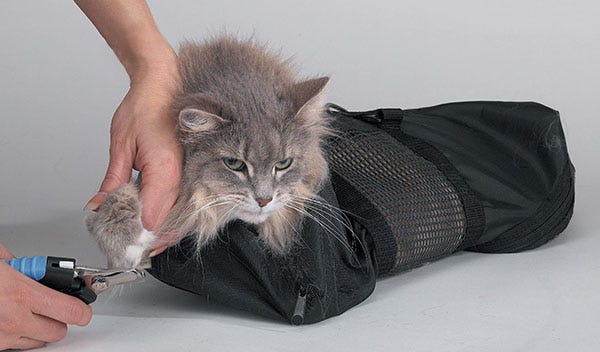When pets feel threatened or discomfort, their natural tendency may be to bite. Some animals have higher bite inhibition than others, but all of them are capable of biting in certain circumstances. Pet groomers are in harm’s way because we handle dogs and cats in an up-close and personal manner and sometimes inadvertently cause them pain merely by doing something as innocent as flexing a joint that we have no way of knowing is sore.
If a bite happens, knowing the proper way to treat the wound and having first aid essentials on hand is crucial. Here are step-by-step instructions for what to do if you are bitten by a pet.
- Secure the animal in a crate, so it is safe while you are taking care of the injury.
- If the wound is not bleeding, encourage it to bleed a little. The idea is to let the blood carry some of the bacteria out of the wound.
- Flush the wound with tepid, running water for several minutes. It will feel like an eternity, so time it.
- Wash the wound well with mild hand soap, then rinse thoroughly. (Do not pour alcohol or any other harsh cleaner into the injury. That can cause cellular damage.)
- Pat the area dry with a clean cloth.
- Apply antibiotic cream or ointment to the injury.
- Bandage with a sterile dressing.
- Call your health care provider. (Really. No fooling around with bites!)
Both dogs and cats have bacteria in their mouths than can cause infection if the bite breaks the skin. Cat bites carry a higher incidence of infection, mostly because their sharp, narrow teeth can insert the oral bacteria deep under the skin. The Mayo Clinic reports that one in three cat bites to the hand will require hospitalization. https://newsnetwork.mayoclinic.org/discussion/when-cats-bite-1-in-3-patients-bitten-in-hand-hospitalized-infections-common/
Besides infection, puncture wounds can potentially carry tetanus, so your health care provider will want to check and ensure you are up to date on that important vaccine. And, with any animal bite, it will be imperative to know if the pet is up to date on its rabies vaccine. Depending on your location, the law may require that the bite be reported to the local health department as well.
Your first aid supplies should contain mild soap, bandages, and antibiotic cream and be stored in an easily accessible place. Adding the above list to that first aid kit is a good plan, too.
It is my hope that you never need to use this information, but if you should be on the wrong end of sharp teeth, knowing how to treat the bite quickly and well will hopefully help you be on the way to healing quickly.
By Daryl Conner, MPS, MCG
Daryl Conner has been devoted to making dogs and cats more comfortable and beautiful for almost 40 years. You can find her happily working at FairWinds Grooming Studio with her daughter and infant granddaughter, or typing away at her latest grooming-related article. Daryl was awarded both a Cardinal Crystal Award and Barkleigh Honors Award for journalism. She shares her meadow-hugged antique Maine farmhouse with her practically perfect husband and too many animals.



